A dishwasher water inlet valve is responsible for controlling the flow of water into the dishwasher.
However, like any other component, it can malfunction over time. A bad inlet valve can cause a range of issues, including a dishwasher that won’t fill or an overflowing dishwasher.
In this blog, we’ll explore some of the common symptoms of a bad dishwasher water inlet valve and how to diagnose and fix them.
Common symptoms of a bad dishwasher water inlet valve
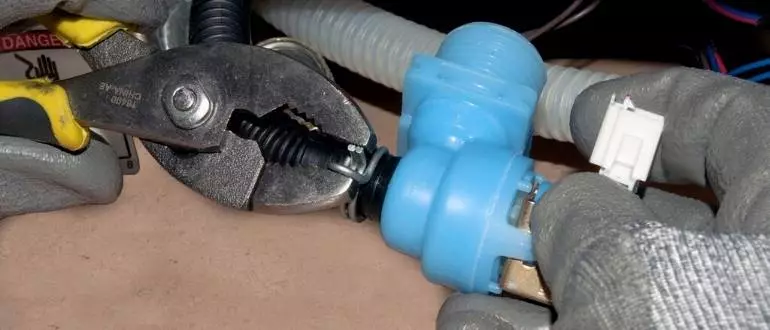
Here are the common symptoms of a bad dishwasher water inlet valve:
- Sign 1: Performance loss
- Sign 2: Underfilling
- Sign 3: Temperature issues
- Sign 4: Dead dishwasher
- Sign 5: Overflowing or leak
Sign 1: Performance loss
When you notice that the dishwasher is failing to clean the dish properly, that indicates something is going wrong inside the machine.
After completing the wash cycle still, dirty dishes can come because of a block or broken water valve.
But to confirm the issues load the dishes again and turn on the cycle again to make sure that there are problems.
Often it can happen due to stuck food particles, so a repeat test is essential.
Test
You need to make sure that the problem is from the water inlet valve. So check the user manual of your dishwasher to find out the exact location of the valve.
Depending on your model, the valve location can differ. Generally, it locates under the spray arm.
First, switch off the dishwasher, then unscrew the spray arm, and then you will find the inlet valve.
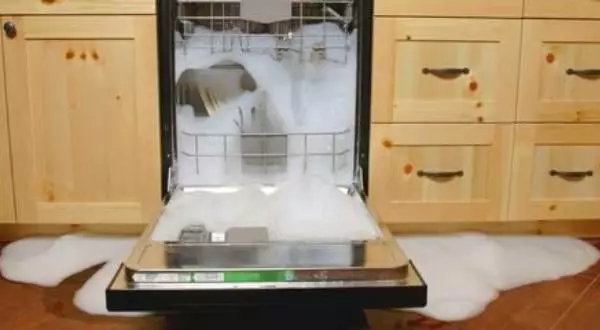
Solution 1
- Remove the spray arms.
- Wash the inlet valve and take out debris and mineral deposits
- Monitor the inlet valve crucially to find any damage or leaks
- If you find any damage, then you need to change the inlet valve which requires a bit of expertise. I will explain later how to replace the water inlet valve. But if you have less time, then you should take professional help to do the replacement proficiently.
You should also check the arms spray because if the arm spray is clogged, then you can also face a similar issue.
Solution 2
- Remove the spray arms from the dishwasher.
- Take a piece of wire that has a similar diameter as spray arms.
- Use the wire to clean the spray arms holes.
- You can also sink the spray arms in a mixture of warm water and vinegar to remove mineral deposits.
- Then fix the arms carefully on the dishwasher so that it spins smoothly.
- If the arms are fine and freely move, then you should unclog the filter
- Unclog dishwasher filter
- Wash the filters using warm and soapy water
- Keep it under running water to rinse thoroughly
- Take a toothbrush to gently scrub the filter to remove stubborn food particles.
- Use a wet towel to clean the nearby area of filters to remove rambling food particles.
Sign 2: Underfilling
If you notice that the machine is unable to fill water or fill the machine slowly, that indicates your valve has some problems.
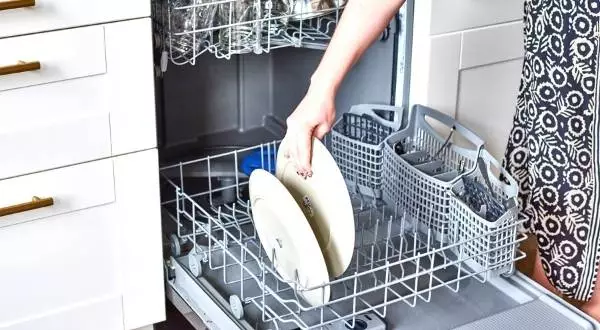
Solution
- Switch off the machine
- Find out the water inlet valve
- Remove the inlet hose
- Use a screwdriver to bring the screen out and clean it crucially. In case of extreme hose block, you can replace the hose.
- Then re-install the inlet hose.
That’s enough to unclog a water inlet valve in the dishwasher. But you should also check the valve crucially whether it contains any leaks or not.
Sign 3: Temperature issues
The water inlet valve controls the temperature of your dishwasher water.
When you find your running dishwasher gets too much hot or super cold water, that means your water inlet valve hose is clogged. So you can follow the above underfilling solutions.
Sign 4: Dead dishwasher
In some models of the dishwasher is completely stopped working if the water inlet valve is damaged.
If you switch on the dishwasher yet find it automatically shut down or refuses to start, that means the valve is going down. So you need to replace the valve.
Sign 5: Overflowing or leak
The water inlets valve maintains the water supply from your tap into the dishwasher. It opens to pour the required amount of water to fill the dishwasher. The water is passed through the spray arm to the dishes to make them clean.
If you switch off the machine and still face Waterflow, that indicates something is wrong. Even you can notice water overflow when running the machine due to the inlet valve being stuck.
Solution
- Clean the water inlet valve carefully.
After cleaning, hopefully, the issue will be solved. But if the valve is stuck, then cleaning won’t be fruitful.
You need to replace the water inlet valve as well as the door seal when the overflowing water is too high. Because it helps you to avoid future leaks.
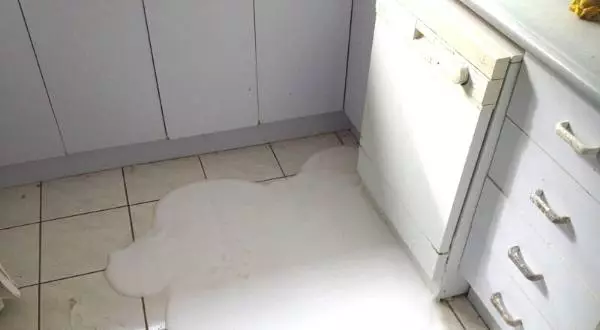
If you have time and confidence, you can replace the water inlet valve yourself by following the below steps.
Unplug the dishwasher
First, switch off the machine and turn off the water supply line before starting the replacement process.
Remove door’s screws
Remove all the screws under the main door. Look at the bottom part of the front cover of dishwashers to find the quarter-inch hex screws and remove them.
Then pull the front cover to take out the bottom panel.
When you remove the screws, try to remember the location. Because if you misplace the screws while re-install them, that can result in punctures or leaks. So be careful on this step.
Find the water inlet valve
You can use the user manual guide to find out the water inlet valve. Earlier I mentioned generally is located on the deck of the dishwasher.
Now remove the water hose and others nearby fittings to make the valve more visible and separate.
Remove the water inlet valve
Detach the water inlet valve carefully and keep the fitting. Remove the two quarter-inch screws from the inlet valve.
Then angle the valve in descending order to detach the electrical harness that is connected with the inlet valve’s assembly.
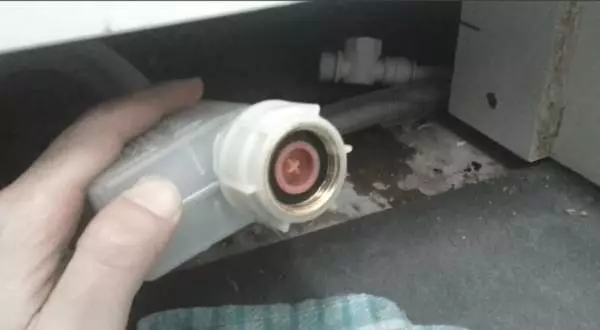
Take a needle and nose pliers to loosen the hose from the valve. It helps to squeeze the spring clamp to detach the hose.
Keep a wet towel or sponges because leftover water can come out when you detach the hose.
Tugging the valve and removing it. Discard all the old tape and fitting with a brush. Clean out the area.
Use a new Teflon tape to place a new valve in the same place with perfect fitting.
Now use vise-grip pliers to tighten the fitting of the valve before it installs in the dishwasher.
Or you can manually fit the inlet valve as much as possible. Follow the below steps to install the new water valve in the dishwasher.
- Now attach the spring clamp back on the outlet hose. You should reinstall the hose to the inlet valve. Using a jiggling motion, you can easily attach the hose securely.
- Then take needle nose pliers to strain the spring clamp again to wave it back beneath the hose. It is essential to lock the hose and avoid unwanted leaks.
- Now place the new valve using the two quarter-inch screws in the same position where the old ones are situated.
- Then re-connect the inlet valve supply hose and place the electrical harness to connect them.
- Now switch on the machine and water supply of the dishwasher to start the machine.
Monitor crucially to find out any leaks from the hose or inlet valve. If there are no issues, then congrats you are successful on this DIY installation of the water inlet valve.
When you screw and unscrew, give proper attention because you need to screw on the exact holes. Don’t mismatch any screws.
What could be the other issues?
A water inlet valve is a device that contains a large number of pieces to ensure smooth water flow.
It is a combination of filters, pipes, solenoids, etc. Each piece or part has its functionality. So you should be careful about the below risk factors.
Focus on a pipe: You can clean a clogged hose and filter, but the pipe can also be clogged. So you should also clean out the pipe.
Solenoids: The electrical wire can also cause problems. So check the electrical portion of your inlet valve.
If the solenoids fail to provide any resistance during the test, then you need to replace the valve.
Final thought
I try to include all the possible symptoms of a bad dishwasher water inlet valve. Besides, I am also sharing the most effective solution for each sign.
According to your water inlet valve condition, you can apply the best tricks. Some issues are easy to solve, so you don’t need to call a professional without trying any tricks.
So, monitor the sign carefully and sort out the issues conveniently. It will make your dishwasher long-lasting and top performer.
